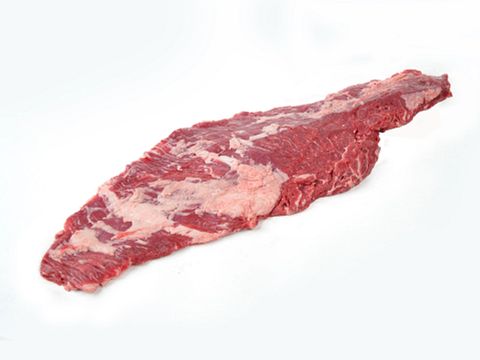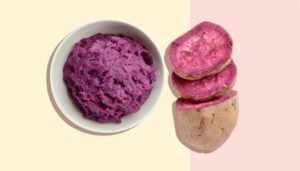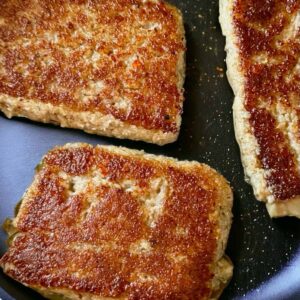
Beef Flap meat was traditionally one of the cattle slices that butchers kept out of the meat case because they intended to keep it for themselves. Similar to skirt and hanger steak, it’s getting simpler to buy in markets nationwide as it gains in popularity. It’s important that you know this about
What Is Flap Meat?
The steak cut from the same part of the cow as flank steak, but closer to the round and shank, is called flap meat, or bottom sirloin butt.
Because flank, hanger, and skirt steaks are similar in texture and grain to flank, you may cook them similarly. When serving, slice the steak across the grain.
While skirt and flank steaks average about two pounds, flap steaks typically arrive on the market at a weight of three to four pounds. Flap and flank steaks are comparable in price. Because they are more in demand (as they are popular with restaurants), skirts tend to be more expensive.
Recepie
Spice it up. Flap meat is similar in texture to hanger, flank, and skirt steaks, and it marinates rather nicely. Marinades impart flavor and soften the grain of flap meat. After giving the steak several fork pricks, marinate it for up to six hours.
Steak should be left whole. You may be tempted to cut the long cut meat into several smaller pieces due to its length. Fight the impulse to turn it whole because it will be easier to do so.
Cook rapidly on high heat. Since flap steak is a very thin cut, cooking it on the stovetop or grill will only take a few minutes. Elevated heat guarantees a nice sear on the exterior while preventing overcooking on the interior. For optimal flavor and texture, it’s ideal to cook the steaks just over medium-rare due to the coarse grain.
Put the steak back. Cover the steak with foil and let it sit for five minutes.
Cut against direction of grain. First, slice the lengthy steak against the grain into multiple smaller pieces. Then, to get tender results, cut each piece against the grain.
Replace with Flap Meat
The greatest alternatives to flap meat are skirt, flank, and hanger steaks, as we’ve already discussed. Conversely, steaks made of flap meat can also serve as a substitute for them. When any of them are on sale, it’s a good idea to keep this knowledge in mind.
What Is Skirt Steak?
A skirt steak is a long, thin cut from the plate (belly) area of the cow or steer that is sliced just below the ribs. It resembles a ribbon. The steak gets its name from the visible muscular fibers that give it a “pleated” appearance. A complete skirt steak has a thickness of around 1/2 inch and weighs between 1 and 2 pounds. Two “inside” and two “outside” skirt steaks are produced by the animal.
Though the outside steak is somewhat more tender and thicker, this cut is typically sent straight to restaurant kitchens. Don’t worry, though; both are delicious and, cooked correctly, it’s hard to distinguish between them.
Because it comes from a muscle that receives a lot of exercise, skirt steak is quite lean and has a great beef flavor. Muscle fibers, which are easily visible throughout the meat, are what give the steak its unique chew. This implies that it’s crucial to cook it to the right temperature: boiling it too long can make it tough and dry, while boiling it too little will not soften the muscle fibers enough. The optimal level is at least medium-rare, but not more than medium.
What Is Flank Steak?
A flank steak is an oval, flat steak that is sliced from the flank region of a cow or steer, which is situated directly in front of the back legs and behind the plate. The steak has muscular fibers running the entire length of it, making it extremely lean and requiring little trimming. A entire flank steak usually has a thickness of 3/4 to 1 inch and weighs between 1 and 2 pounds.
Although flank steak is well-known for having a rich, meaty flavor, it is rougher than certain other cuts due to the absence of marbling, or inner fat veins. It will remain juicy if cooked to medium-rare, and its chew will be lessened if it is sliced extremely thinly across the grain. For flank steak, marinating is also advised; an acidic, salty, and oil-based marinade works best to penetrate the flesh.
FAQS
What cut of beef is flat meat?
A very thin cut from the bottom sirloin is called beef flap meat. It is less valued (and therefore less expensive) than skirt steak, although it tastes and feels somewhat similar. Tacos, carne asada, stir-fries, and other sliced or diced applications are among the many uses for it.
What is another name for flat meat?
The steak cut from the same part of the cow as flank steak, but closer to the round and shank, is called flap meat, or bottom sirloin butt.
Is beef flap meat tender?
The sirloin, or middle back, of the animal, is where the flap steak originates. Another distinction is that the flap is softer than the skirt steak, but the skirt steak has a marginally stronger flavor. more robust flavor
Is beef good for health?
Although beef is rich in cholesterol and saturated fats, which can lead to the accumulation of fatty deposits in the blood, it is also a wonderful source of protein and other minerals. Eaten in moderation, beef can be a nutritious component of your diet.



